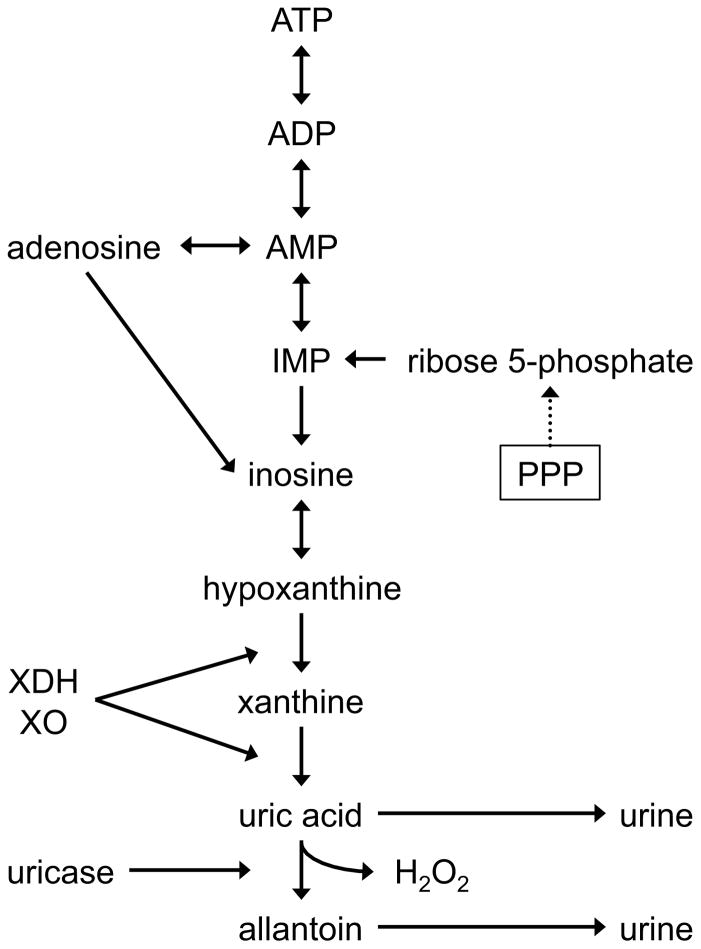Figure 6. ATP Degradation.
ADP and AMP are early stage products of ATP hydrolysis. During an ischemic event such as hemorrhagic shock, AMP can be hydrolyzed to provide the vasodilator adenosine 43. Alternatively, AMP degradation results in the production of hypoxanthine 83, which is further metabolized to xanthine and then uric acid by xanthine dehydrogenase (XDH) or xanthine oxidase (XO) 84. Additionally, in pigs, uric acid is also be converted to allantoin and H2O2 enzymatically by uricase. Both uric acid and allantoin are excreted in the urine. During biosynthesis, AMP can be generated from ribose 5-phosphate, a product of the pentose phosphate pathway. IMP, inosine monophosphate.

